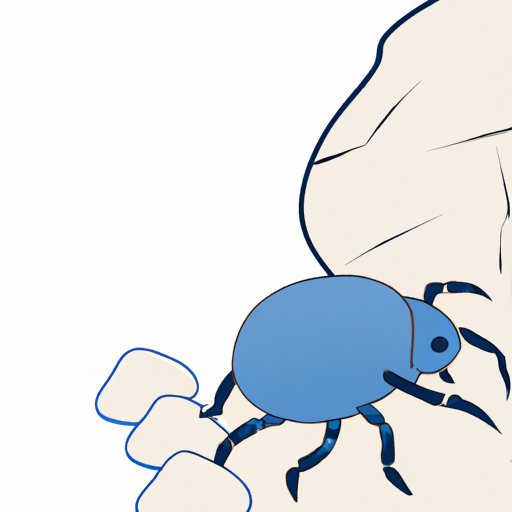Introduction
Dust mites are microscopic creatures that live in your home and feed on the dead skin cells of humans and animals. While they are not harmful to most people, they can trigger allergies and asthma in some. To prevent allergic reactions and keep your home clean and healthy, it’s important to be aware of dust mites and take steps to control them.
In this article, we’ll explain what dust mites are, how to identify areas of your home where they might be present, and how to see them up close. We’ll also provide tips on preventing dust mite infestations and reducing the symptoms of dust mite allergies. Whether you’re a homeowner, renter, or just curious, this guide is for you.
Understanding Dust Mites
Dust mites are tiny arachnids that are invisible to the naked eye. They are usually between 0.1 and 0.5 millimeters long and have translucent white bodies. Dust mites live in warm, moist environments and are most commonly found in bedding, carpets, and upholstered furniture. They are also present in dust and can be found in many other areas of your home.
Dust mites feed on the dead skin cells of humans and animals, which is why they are commonly found in areas where people spend a lot of time. They do not bite or sting, but their feces can trigger allergic reactions in some people.
Identifying Areas Where Dust Mites Could Be Present
If you want to identify areas of your home where dust mites could be present, there are a few things to look for. Dust mites thrive in warm, humid environments, so they are most commonly found in bedding, carpets, and other household textiles. If you have allergies or asthma, you may notice symptoms when you spend time in areas where dust mites are present.
You can also use a hygrometer to measure the humidity levels in your home. Dust mites thrive in environments with humidity levels above 50%. If your home is too humid, you can use a dehumidifier to lower the humidity levels and make your home less hospitable to dust mites.
Seeing Dust Mites Up Close
If you want to see dust mites up close, you’ll need a magnifying glass or microscope. You can find these at most science supply stores or online retailers. Once you have a magnifying glass or microscope, you can collect a sample of dust from your home and examine it under the lens.
Dust mites are usually too small to see with the naked eye, but a microscope or magnifying glass can reveal their translucent bodies and spider-like features. If you’re having trouble identifying dust mites, you can use images or illustrations to help you get a better look at what they look like.
Preventing Dust Mite Infestations
The best way to prevent dust mite infestations is to keep your home clean and dry. Regular cleaning and vacuuming can help remove dust and dead skin cells from your home, which will make it less hospitable to dust mites. You should also wash and dry your bedding and other household textiles at high temperatures to kill any dust mites that might be present.
If you live in a humid environment, you may need to use a dehumidifier to control the humidity levels in your home. This will make it less hospitable to dust mites and other pests that thrive in warm, humid environments.
Reducing Symptoms of Dust Mite Allergies
If you or someone in your home is allergic to dust mites, there are a few things you can do to reduce symptoms. Air filters can help remove dust and other allergens from the air, which can help reduce the severity of allergic reactions. You should also vacuum your home regularly, especially in areas where dust mites are likely to be present.
Using allergy-friendly bedding can also help reduce symptoms of dust mite allergies. Mattress and pillow protectors can help keep dust mites out of your bedding, while hypoallergenic sheets and comforters can help reduce allergic reactions. If you’re not sure what type of bedding is best for your allergies, talk to your doctor or allergist for advice.
Conclusion
Dust mites are a common problem in many households, but they can be controlled with a little effort. By keeping your home clean and dry, identifying areas where dust mites are likely to be present, and using preventive measures like air filters and allergy-friendly bedding, you can reduce the risk of allergies and asthma caused by dust mites.
If you’re not sure whether you have a dust mite infestation or need help identifying dust mites, talk to a professional pest control expert for advice. With a little knowledge and effort, you can keep your home clean, healthy, and free of dust mite infestations.
